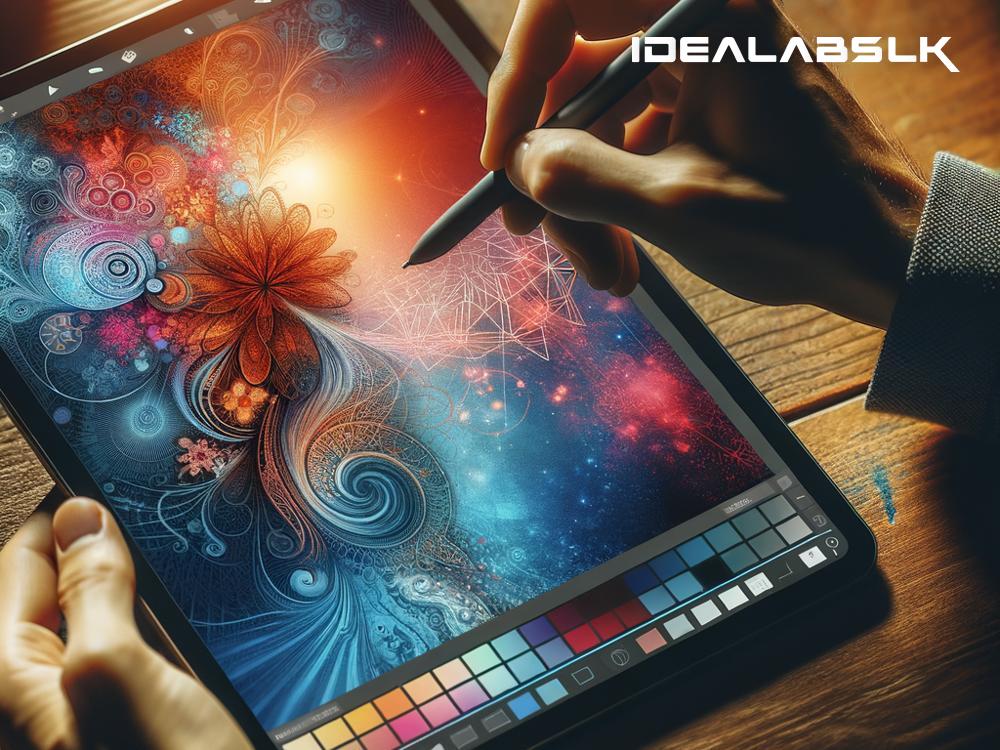Title: Unleashing Creativity: How AI Transforms Art on Tablets
The world of art is no stranger to evolution. From the ancient cave paintings to the sophisticated digital art of today, artists have always found new ways to express their creativity. In this digital age, tablets have become the canvas of choice for many artists. And now, with the advent of Artificial Intelligence (AI), these portable studios are becoming more powerful and intuitive, offering artists unprecedented ways to bring their visions to life. Let’s explore how AI is enhancing creativity tools in tablets for artists, making art more accessible, diverse, and engaging.
Personalized Learning and Development
One of the most significant ways AI is revolutionizing creativity tools on tablets is through personalized learning. AI algorithms can analyze an artist’s style, suggesting improvements, tutorials, and even predicting what tools or colors they might want to use next based on their past activities. This personalized approach means that artists can learn and develop their skills at their own pace, focusing on areas that will benefit them the most.
Experimentation Without Limits
AI also encourages experimentation. Traditional art supplies can be expensive, and mistakes are often permanent. However, with AI-powered tablets, artists can try new techniques, colors, or styles without fear of wasting resources. Undoing a mistake is as simple as tapping a button. Furthermore, AI can suggest experimental combinations, pushing artists out of their comfort zones and enabling them to explore creative avenues they might not have considered otherwise.
Realistic Simulations
Another area where AI shines is in its ability to simulate real-world materials and effects. Whether it’s the texture of canvas, the blend of watercolors, or the weight of pencil strokes, AI algorithms can mimic these with astonishing accuracy. For artists, this means that the transition from physical to digital art can be seamless. They can enjoy the tactile sensations and visual effects of traditional art, combined with the versatility and convenience of digital tools.
Access to Diverse Styles and Techniques
Art is a window into different cultures and eras, and AI-powered tools on tablets are making this window even broader. By analyzing vast databases of artworks, AI can help artists learn and apply different styles from across the globe and history. Want to paint like Van Gogh or create intricate patterns inspired by African art? AI can guide you through these processes, breaking down complex styles into learnable parts, and allowing you to incorporate these influences into your own work.
Real-Time Collaboration and Feedback
Creativity often thrives on collaboration, and here too, AI is making a difference. Cloud-based AI tools enable artists to collaborate in real time, regardless of their physical location. They can work on a piece together, share feedback instantly, and even allow AI to suggest changes or improvements. This collaborative environment not only speeds up the creative process but also opens up new avenues for creative expression.
Overcoming Creative Blocks
Every artist faces creative blocks at some point. AI can be a source of inspiration during these times. By suggesting themes, colors, or even generating preliminary sketches based on the artist’s past works, AI can kickstart the creative process. It acts not just as a tool, but as a creative partner, offering a nudge in the right direction when needed.
Accessibility for All
Perhaps one of the most impactful aspects of AI in art is its potential to make creativity accessible to everyone. AI-powered tools can adapt to the needs of artists with disabilities, offering voice commands, eye tracking, or simplified interfaces. This inclusivity means that more people than ever can express themselves through art, breaking down barriers and democratizing creativity.
The Future of Art with AI
As we look to the future, the integration of AI in creativity tools on tablets is set to redefine the boundaries of art. With AI continuing to evolve, we can expect even more intuitive tools, deeper personalization, and perhaps even new forms of art that we haven’t yet imagined. However, it’s crucial to remember that AI is not here to replace the artist. Instead, it serves as a bridge, connecting imagination with possibility, and enhancing the creative journey in ways that were once impossible.
In conclusion, AI is undoubtedly transforming the art world, making it more inclusive, versatile, and exciting. For artists, this is a golden era of creativity where their tablets, powered by AI, become gateways to endless possibilities. Embracing these technological advancements means not just keeping pace with the times, but unlocking new realms of creativity, ready to be explored. The brush, or in this case, the stylus, is in the artist’s hand, and the canvas is ever-expansive. The future of art is here, and it is spectacularly intelligent.

